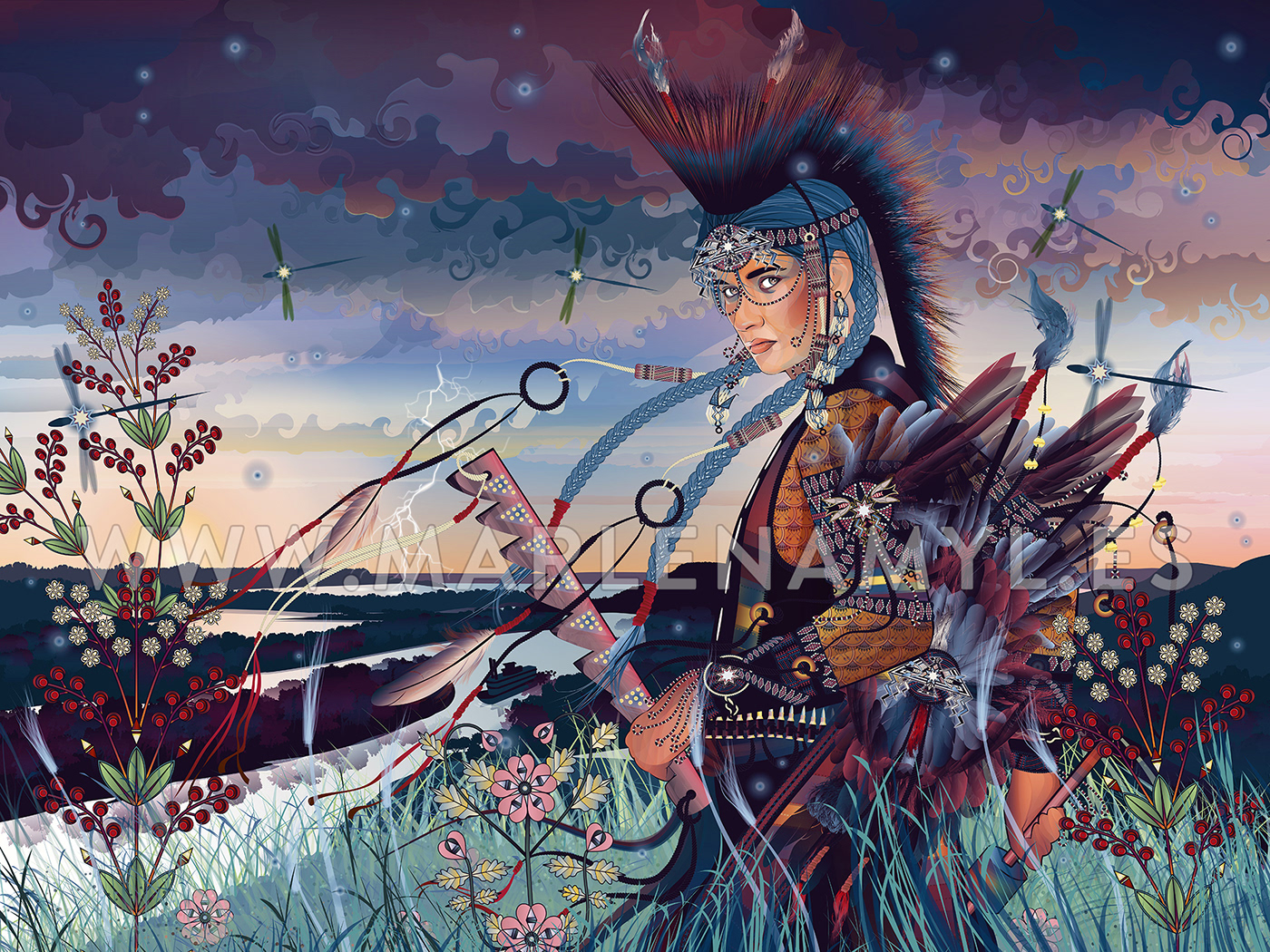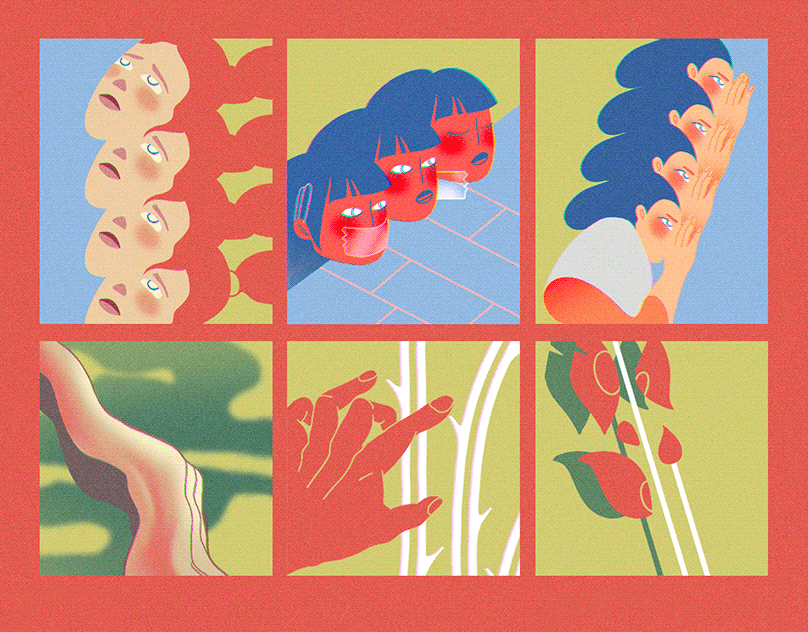
RETURN OF WAKÍŊYAŊ
Vector Illustration, 2019
In my culture, Wakíŋyaŋ is the thunder being, the messenger of Íŋyaŋ (Stone Spirit). The Uŋktéȟi (underwater serpents/water spirits) are the eternal enemies of the Thunders.
Near Ȟemníčhaŋ Othúŋwe Wašté (Red Wing, Minnesota), there are numerous burial mounds and in one set, there contains a thunderbird effigy. Scientists have studied it to note there’s a much higher frequency of lightning strikes there than in comparison to other locations. Thunderbolts also represents the connection between life and death, earth and sky, as it connects land with the heavens (and the Milky Way we believe to travel in the afterlife). These Dakota beliefs are mirrored in the scientific understanding of lightning as an energy-balancing transfer between the positively charged earth and negatively charged thunderclouds.
In the early days of Red Wing, European-Americans would mark the end of winter with the return of the boats coming up the Mississippi River. They would rush to the top of Ȟemníčhaŋ (Barn Bluff) to watch them come in. Dakota people have our own way of marking the end of winter on the bluff with a ceremony called “Return of the Wakinyan” or the thunder beings, which mark the return of spring and rejuvenation of life. Wakíŋyaŋ is considered the protector of humans from Uŋktéȟi, the underwater serpent who brings about drownings, floods and mysterious deaths because of their deep dislike of people. The two are locked forever in war with humans in the middle as the Wakíŋyaŋ cannot chase the Uŋktéȟi once they’re in the waters.
In this piece, Wakíŋyaŋ is illustrated as a traditional grass dancer, who look up to Wakíŋyaŋ as their “patron deity”. Many of the items relate to Wakíŋyaŋ, including the thunderbolt-cut whip, rattle (see Siŋtéȟda (Rattlesnake), Protector of Medicines for detailed story of the rattle) as well as being a way to honor warriors (Wakíŋyaŋ is a god of war). The chokecherry is used sometimes to create arrows and dragonflies represent the spirits of past warriors. The prairie rose and Grass Dance Society teaches warriors to also make peace.
(Award: 2019 Northern Plains Indian Art Market, Division X: Digital and Computer Generated – 1st place)





GRASS DANCE SOCIETY & REGALIA
The Grass Dance Society came to the Dakota either from the Ponca/Omaha/Pawnee or Ho-Chunk in the 1860s. The dance was originally a warrior society and Dakota became teachers of the dance, spreading it to the Canadian Dakota, Ojibwe, Cree, Assiniboin and others. The dance was outlawed due to its religious undertakings, however, it was still practiced and became the “last bastion of Dakota custom, tradition, and language” (Mark Diedrich) as the tribes transitioned into the reservation era.
The Grass Dance Society came to the Dakota either from the Ponca/Omaha/Pawnee or Ho-Chunk in the 1860s. The dance was originally a warrior society and Dakota became teachers of the dance, spreading it to the Canadian Dakota, Ojibwe, Cree, Assiniboin and others. The dance was outlawed due to its religious undertakings, however, it was still practiced and became the “last bastion of Dakota custom, tradition, and language” (Mark Diedrich) as the tribes transitioned into the reservation era.
The “patron deity” is Wakíŋyaŋ (Holy Flyer/Thunderbeing/Thunderbird); all songs and prayers were directed to Wakíŋyaŋ, who is one of the greatest spiritual powers to Dakota people. The thunderbeing gave the Dakota wild rice, the war axe and spear and was considered a god of war. The purpose of the Grass Dance Society was to serve the people and set an example to young men for steadfast valor in war and generosity in times of peace. It was a society for the bravest warriors to proclaim their lifetime achievements.
The whip in this represents being prepared to spring into action at the flash of an eye, any hesitation could result in death of the warrior. Whip Owners were the police during battle, preventing any glory-seekers from premature attacks. A Whip Owner also had to show acts of generosity, such as stealing 4 horses from enemy tribes and giving away 3 to the poor. The saw-tooth edge of the club represents the zigzag of the Thunders.
Every member of the Grass Dance Society was required to wear a headdress of porcupine guard hair and red-dyed, deer-tail hair. Each member carried a rattle, sometimes made of a tin (evaporated milk can) and were shaken in time to the society songs. Much more in detail can be read about this society in the book Grass Dance of the Spirit Lake Dakota by Louis Garcia (with Mark Diedrich).
Visit my art at marlenamyl.es


